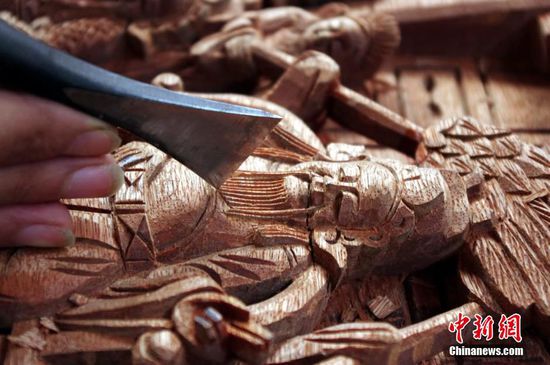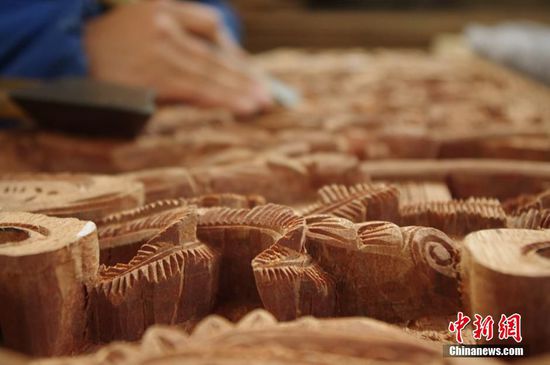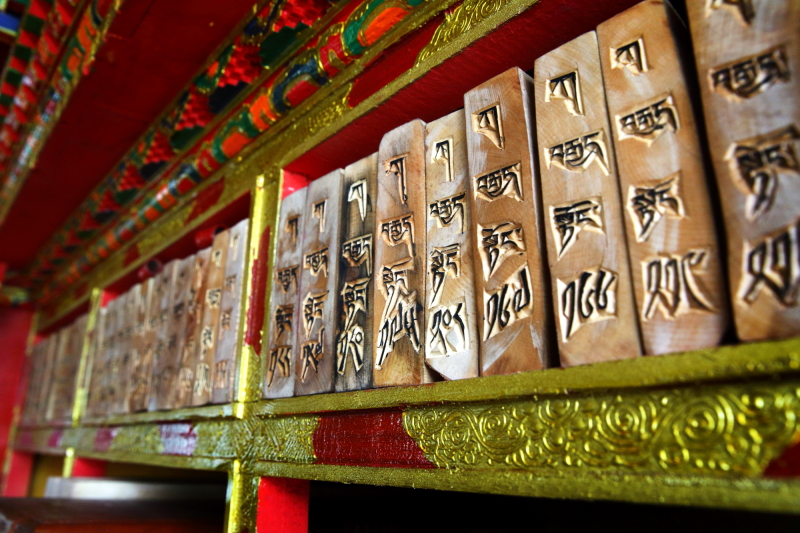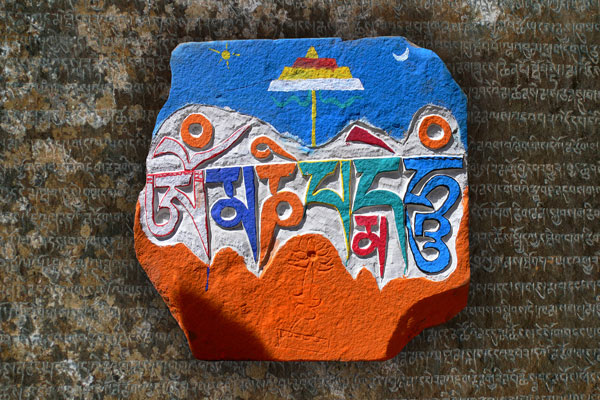Tibetan wood carving: devotion art on wood
The traditional handicraft of wood carving is a particularly charming form of art produced by the Tibetan people during long-term production. It reflects the Tibetan people’s intelligence and artistic temperament.
When entering a Tibetan home, you’ll immediately be struck by the numerous wood carvings, ornamental plants and unique Tibetan-style furniture. These Tibetan tables and cabinets in many different shapes and sizes are colorful and bright, and the hollowed-out engravings on the flowers are extremely vivid.

The wooden Buddha statues are beautifully shaped with a compact structure and smooth lines, as well as soft and firm parts. The Buddha’s graceful posture and look of compassion illustrate the exquisite skills of the engraver.
Tibetan folk wood carving art is concise in skill that focuses on vivid shape for spirit conveyance. It has a strong decorative flavor as well as artistic charm. Decorative carving is also found on Tibetan buildings, especially on doors, windows and beams; this type of carving has strict rules and is particularly eye-catching. Tibetan wood carving art can be seen everywhere, for example on various parts of old Tibetan-style buildings including column heads, beams, wood and even windows and doors. In addition, woodcarving craftsmen also display their skills on shrines, Tibetan cabinets and Tibetan wooden tables.

Carving is a product of sculpting and painting, which relies on a combination of perspective and geometric figures to represent three-dimensional space. Sometimes the engraving is on one side, other times on both sides.
The carving methods include embossing, hollowing out and three-dimensional sculpting. Carving is rich in content and includes Tibetan wood carving Buddha statues, furniture, windows and beam columns. There are also many different themes such as people, flowers, insects, birds, animals and other patterns.

In the creation of wood carving art, the most significant part is in the use of various methods of knife work, which precisely embody the creative intent of the work. Good knife work requires decades of practice and to ensure neat work the knife must be in sync with the hand, and the heart with the eye. Each square inch reflects the finesse and value of the wood carving.
Wood carving is an important part of Tibetan culture. Once the carving is completed, it further reflects the ethnic character of Tibetan people. Bright colors with plenty of contrast are used on Tibetan furniture and door beams to reflect the outgoing character of the Tibetans and their longing for a joyous life.
Your Comment
Name E-mailRelated News
-
;
-
-

-
Pusum carving
Pusum carving, Tibetan incense and Tibetan paper are known as the "three treasures of Nyemo County".
-
-
-

-
Lotus world beneath carving knife
What can you do during 15 years? Tong Yongquan Spent 15 years to create one Ming dynasty sacred work replica.
-
-
-

-
Tibetan folk stone carving culture: faith engraved into Mani stone
Devout believers on Qinghai-Tibet Plateau regard that Mani stones can bring to people good luck according to their wishes.
-
Based in Lhasa, Tibet Vista is a Tibet travel agency that specialized in Tibet permit, and Tibet tours for both private and group travelers at a local price!
•4 Days Lhasa City Group Tour from USD 460 •8 Days Everest Base Camp Group Tour from USD 850 •15 Days Mt.Kailash Group Tour from USD 1780 •2016 Tibet Train Tours from Beijing, Shanghai, Chengdu, Xining,etc










